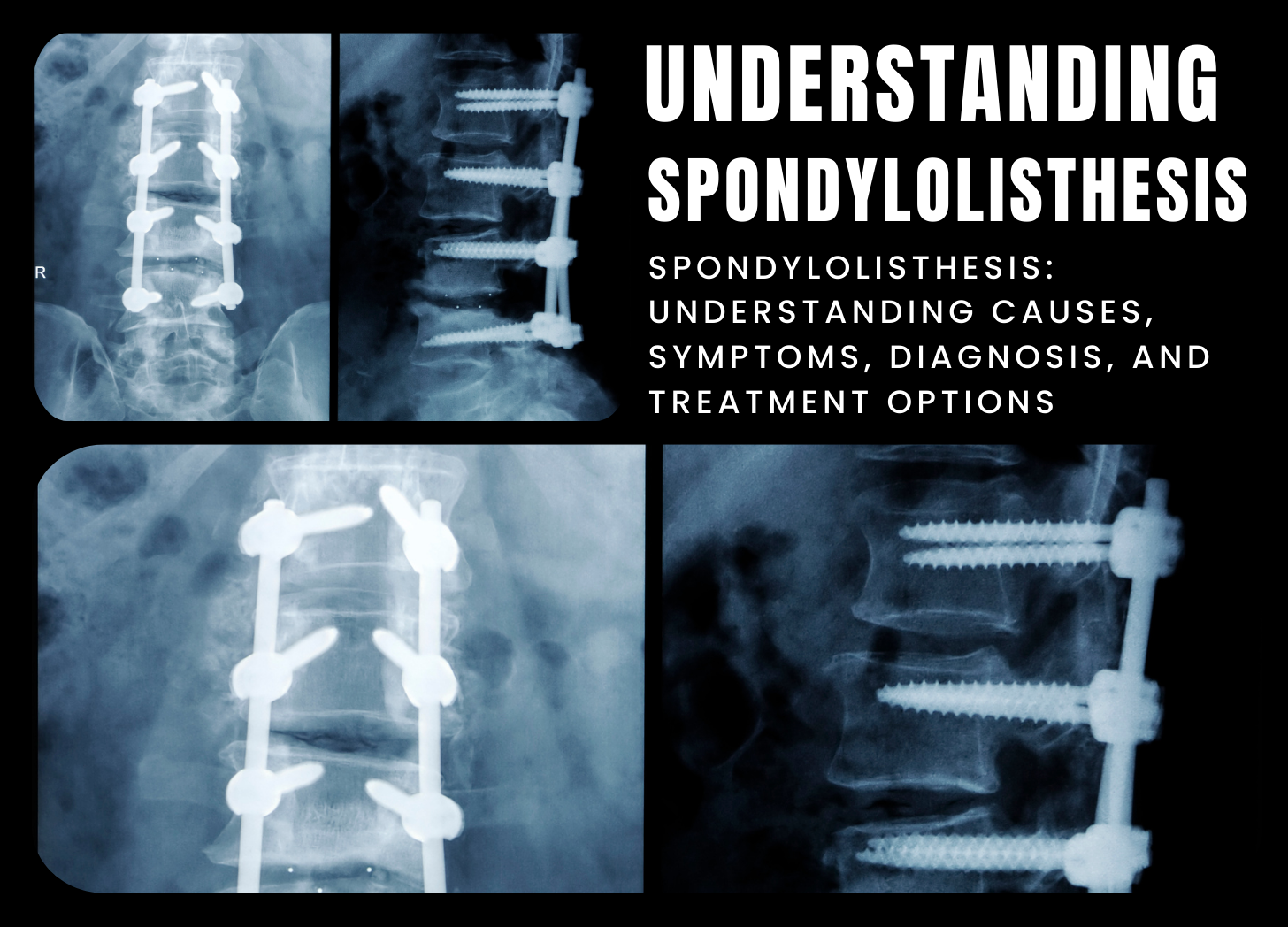Contact Us
Contact Us

Spondylolisthesis is a spinal condition characterized by the forward displacement of one vertebra over the vertebra beneath it. This displacement can occur anywhere along the spine but is most frequently found in the lower back (lumbar spine). Various factors contribute to spondylolisthesis, including congenital anomalies, degenerative changes in the spine, trauma, repeated stress injuries, and vertebral structural problems.
One of the most common causes of spondylolisthesis is a defect or fracture in the pars interarticularis, a small bony segment that connects the facet joints at the back of the spine. This condition, known as spondylolysis, weakens the vertebral column, allowing the affected vertebra to move forward over time. Additional contributing factors may include age-related deterioration of the spinal discs and joints, abnormal spinal curvature (e.g., scoliosis), and excessive stress on the spine from activities like weightlifting or gymnastics.
The symptoms of spondylolisthesis vary depending on the degree of slippage, the location of the affected vertebra, and whether there is nerve or spinal cord compression. Common symptoms include:
In severe cases, spondylolisthesis can cause neurological abnormalities such as leg weakness, tingling, or loss of sensation.
Spondylolisthesis is typically diagnosed through a combination of medical history, physical examination, and imaging studies. X-rays, magnetic resonance imaging (MRI), or computed tomography (CT) scans are used to assess the extent of vertebral displacement and identify any associated structural abnormalities. The condition is classified according to the degree of slippage, with grades ranging from minor to severe.
Treatment for spondylolisthesis aims to alleviate symptoms, stabilize the spine, and prevent further progression. Conservative treatment options include:
Strengthening exercises for the core and back muscles can improve spinal stability and reduce stress on the affected vertebrae.
If conservative treatments are ineffective for severe or symptomatic spondylolisthesis, surgery may be necessary to realign the misplaced vertebrae and stabilize the spine. Surgical options may include:
Spondylolisthesis is a spinal condition characterized by the forward displacement of one vertebra over the vertebra below it. While spondylolisthesis can cause discomfort and functional impairment, effective treatment options are available to reduce symptoms and enhance the quality of life for those affected.
Post a Comment